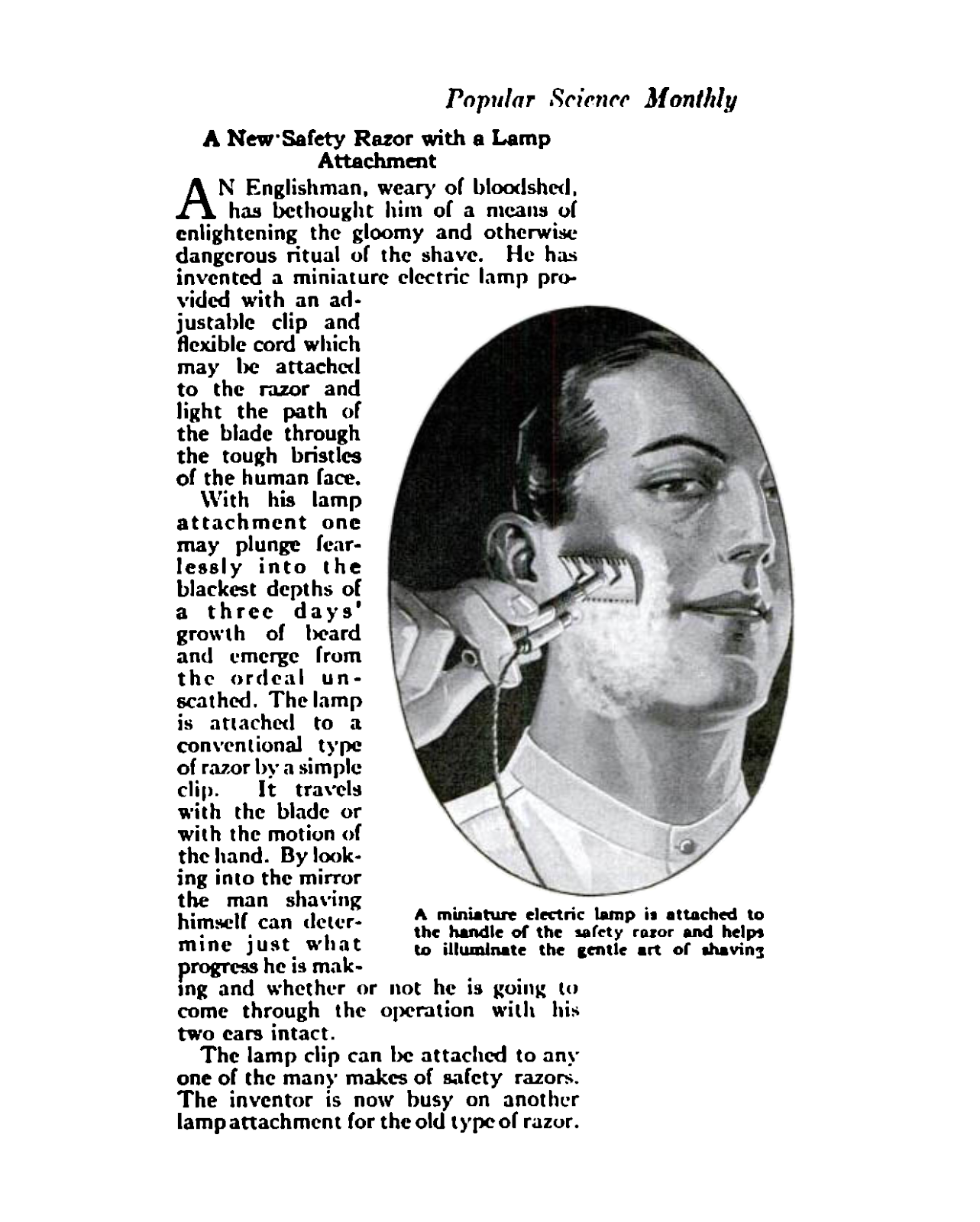
NEW SAFETY RAZOR HAS OSCILLATING BLADE
Especially designed for those with tender skins and tough beards, a new safety razor employs an oscillating blade to cut the hairs. While the razor is drawn across the face, a pair of friction rollers revolve and cause the whole blade to move sideward with a reciprocating motion, as indicated by arrows in the photograph at left. As a result, this miniature mowing machine is declared to give an unusually close shave with a minimum of chafing and discomfort. The one piece razor may be operated and cleaned with one hand.











